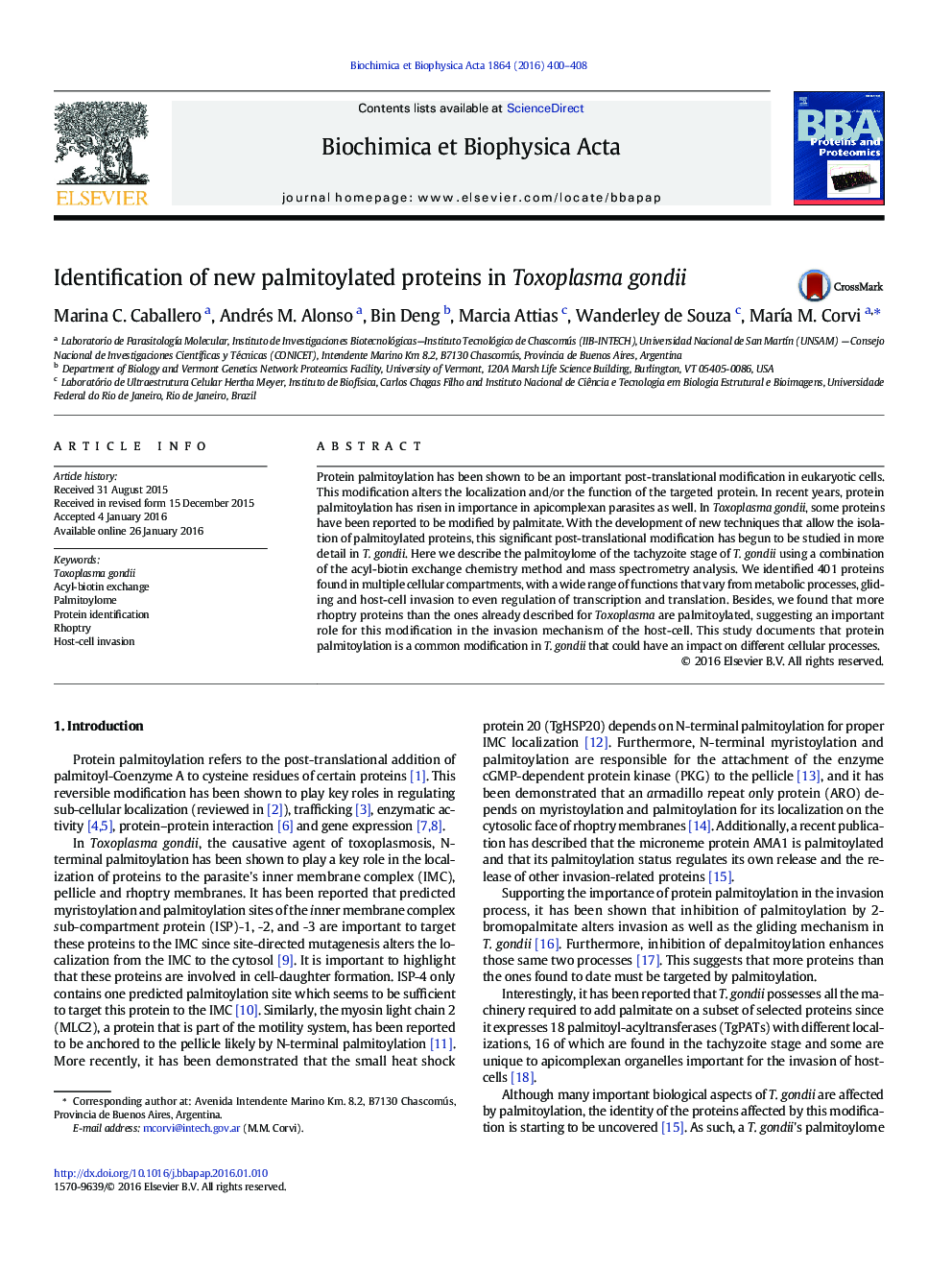| Article ID | Journal | Published Year | Pages | File Type |
|---|---|---|---|---|
| 1178143 | Biochimica et Biophysica Acta (BBA) - Proteins and Proteomics | 2016 | 9 Pages |
•First report of T. gondii palmitoylome using ABE technique.•Palmitoylated proteins vary in localization and function.•Interestingly, a large fraction was found to be nuclear and mitochondrial.•Localization of some rhoptry proteins is regulated by palmitoylation.•Palmitoylation inhibition does not affect rhoptry morphology.
Protein palmitoylation has been shown to be an important post-translational modification in eukaryotic cells. This modification alters the localization and/or the function of the targeted protein. In recent years, protein palmitoylation has risen in importance in apicomplexan parasites as well. In Toxoplasma gondii, some proteins have been reported to be modified by palmitate. With the development of new techniques that allow the isolation of palmitoylated proteins, this significant post-translational modification has begun to be studied in more detail in T. gondii. Here we describe the palmitoylome of the tachyzoite stage of T. gondii using a combination of the acyl-biotin exchange chemistry method and mass spectrometry analysis. We identified 401 proteins found in multiple cellular compartments, with a wide range of functions that vary from metabolic processes, gliding and host-cell invasion to even regulation of transcription and translation. Besides, we found that more rhoptry proteins than the ones already described for Toxoplasma are palmitoylated, suggesting an important role for this modification in the invasion mechanism of the host-cell. This study documents that protein palmitoylation is a common modification in T. gondii that could have an impact on different cellular processes.
